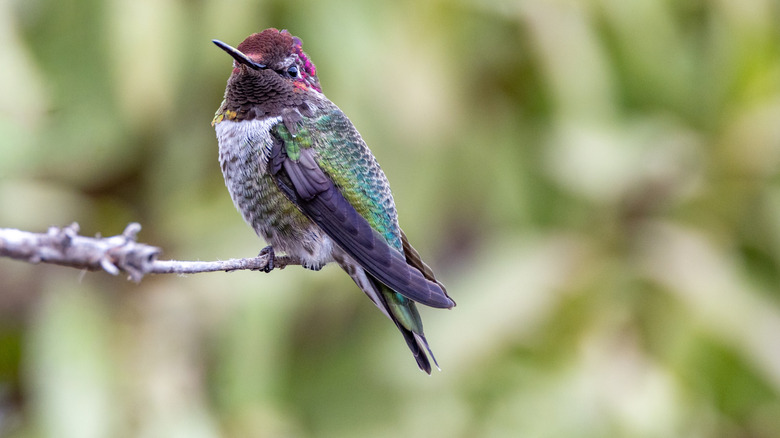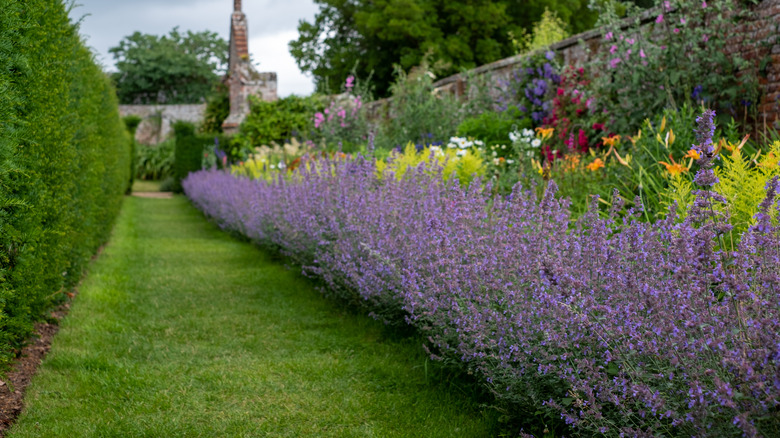Keep Hummingbirds Visiting With A Late-Blooming Summer Flower They Love
If you love a late summer garden full of blooms, you're not alone — hummingbirds are also big fans. Late summer is an especially important time for the little birds as it is when they begin their southward migration and need as much fuel as possible. If you're looking for a charming perennial bloomer to bring beauty to you and sustenance to hard working hummingbirds, look no further than 'Walker's Low' catmint (Nepeta x faassenii 'Walker's Low').
'Walker's Low' catmint, a cross between two different catmint species, is an ideal addition to gardens. Not only are its blooms adored by hummingbirds, butterflies, and bees, but they're also a perfect way to add beautiful spikes of purple flowers to your garden all spring and summer long. It also boasts beautiful and fragrant silver leaves. Unlike many of its mint family relatives, 'Walker's Low' catmint isn't overly aggressive either, making it a great team player in garden beds. Consider pairing your catmint with other flowers that thrive in similar conditions to create a garden that will easily attract hummingbirds all season long.
Caring for 'Walker's Low' catmint
Hardy in USDA Hardiness Zones 4 through 8, 'Walker's Low' catmint thrives in sunny gardens with well draining soil. Care for catmints like 'Walker's Low' is generally quite easy. Just stay on top of deadheading your plants if you want them to keep blooming through summer. Rather than simply snipping off spent blooms, however, catmint does well with hard prunes back to base. If you leave 2 to 3 inches, the plant bounces back in about two weeks, with a fresh shape and more flowers.
The low maintenance perennial is tolerant of pollution and drought, and is even left alone by deer. Despite its name, 'Walker's Low' catmint isn't generally a hit with cats, so you don't have to worry about your flowers being smooshed by feral kittens either. With a height and spread of only 2 feet, 'Walker's Low' is a great plant for placing near the front of borders and pollinator garden beds. It can function as an easy-to-grow ground cover, as well. And because its leaves are evergreen down to about 15 degrees Fahrenheit, it should even provide you with some winter interest after the hummingbirds have left for the season.

